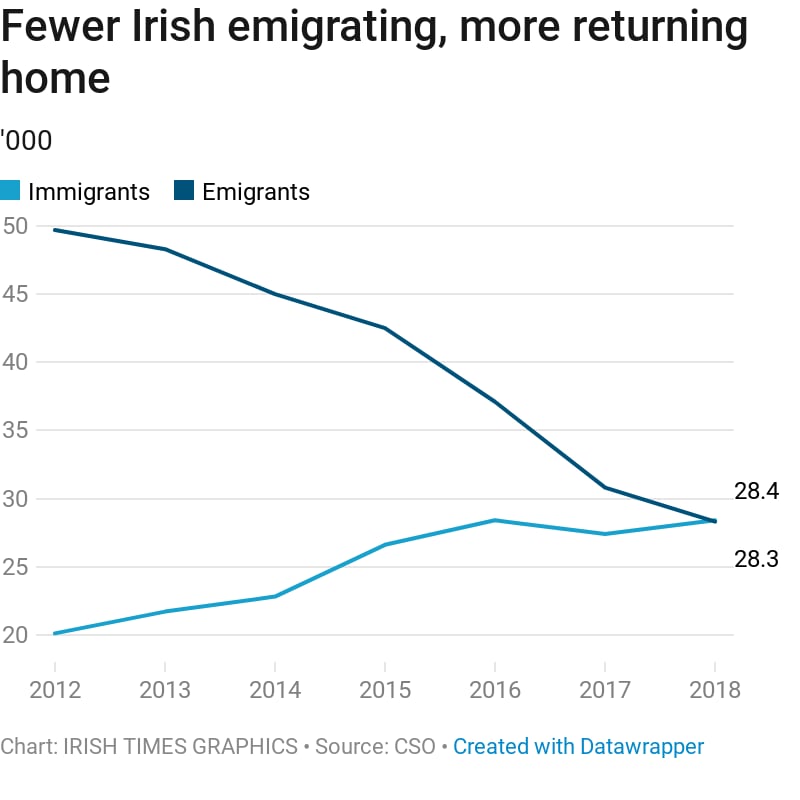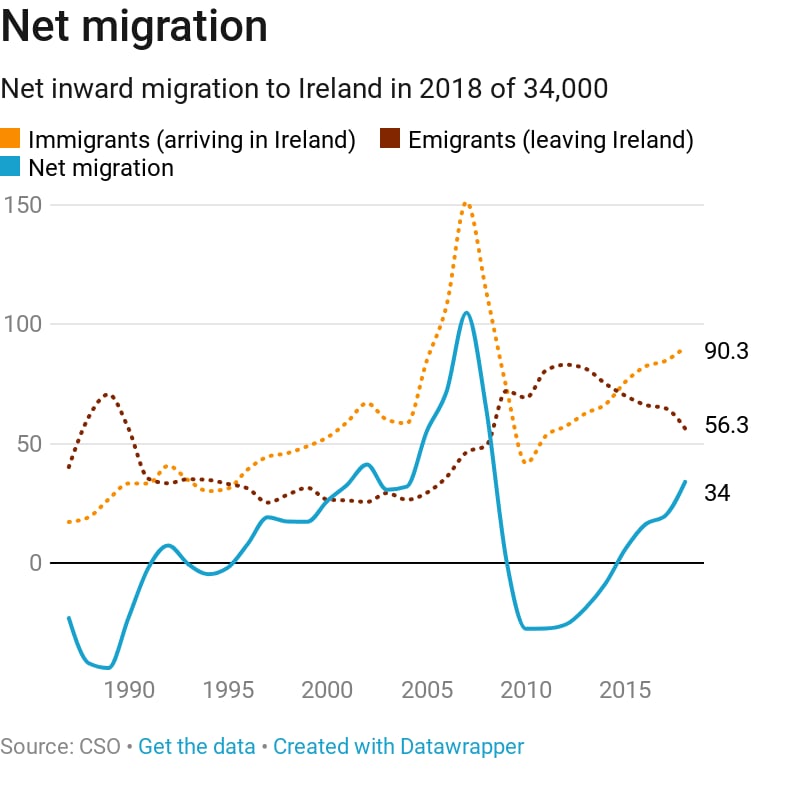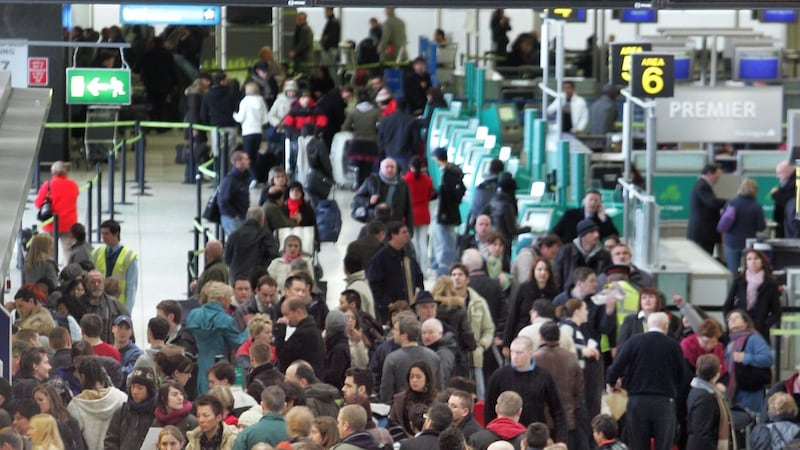You cannot plan for the future without having a clear picture of the present. That is why the work of the Central Statistics Office (CSO) is so important in establishing population trends within the State and in giving advance notice of requirements for schools, hospitals, housing and other vital services.
Early governments paid scant attention to this vital information. That is changing, however, and inter-census estimates now provide additional, up-to-date details.


The latest figures from the CSO confirm the population is growing rapidly, nudged forward by a natural increase of births over deaths, by rising inward migration and by falling emigration. In the year to last April, more than 90,000 immigrants came here. Close on one-third of those were returning Irish nationals while, of those leaving, about half were Irish born.
For the first time in 10 years, more Irish citizens returned home than left the country. The overall effect was an increase of 64,500 residents for the year, bringing the population to 4.857 million.

These CSO estimates provide support for the Government's 10-year National Development Plan. It has been designed to moderate the growth of Dublin in favour of the regional cities of Cork, Limerick, Waterford and Galway, where populations are growing strongly. Investment in social housing and infrastructure are critical elements of this plan. And while regional strategies are due to be decided by the end of this year, there is no certainty the Dáil will ratify them because of political and local rivalries.
We are now a multicultural society, with one in eight residents born elsewhere, and the demand for skilled and unskilled workers is rising
Planning for education will be affected by these figures. The number of children under 14 years of age has remained static, while there has been significant growth in the 15-24 age cohort. Investment in third-level education will, therefore, become more urgent, compared to primary and second levels. The benefits of a skilled workforce have been demonstrated through rising incomes and economic growth. In that context, nearly two-thirds of immigrants over 15 years of age have third-level qualifications.
We are now a multicultural society, with one in eight residents born elsewhere, and the demand for skilled and unskilled workers is rising. Within the past year, non-Irish nationals from outside the EU accounted for one-third of all immigrants. At the same time, this group made up nearly one-third of emigrants. A similar pattern emerged following the Brexit vote, with more people coming from the UK than going there.
But the rise in immigration numbers, along with balanced emigration, suggests a continuation of the housing shortage. Pressure on social services is also likely to grow. The Government should take precautions and revive some of the structures that were designed to encourage integration and counter racism more than 10 years ago.









